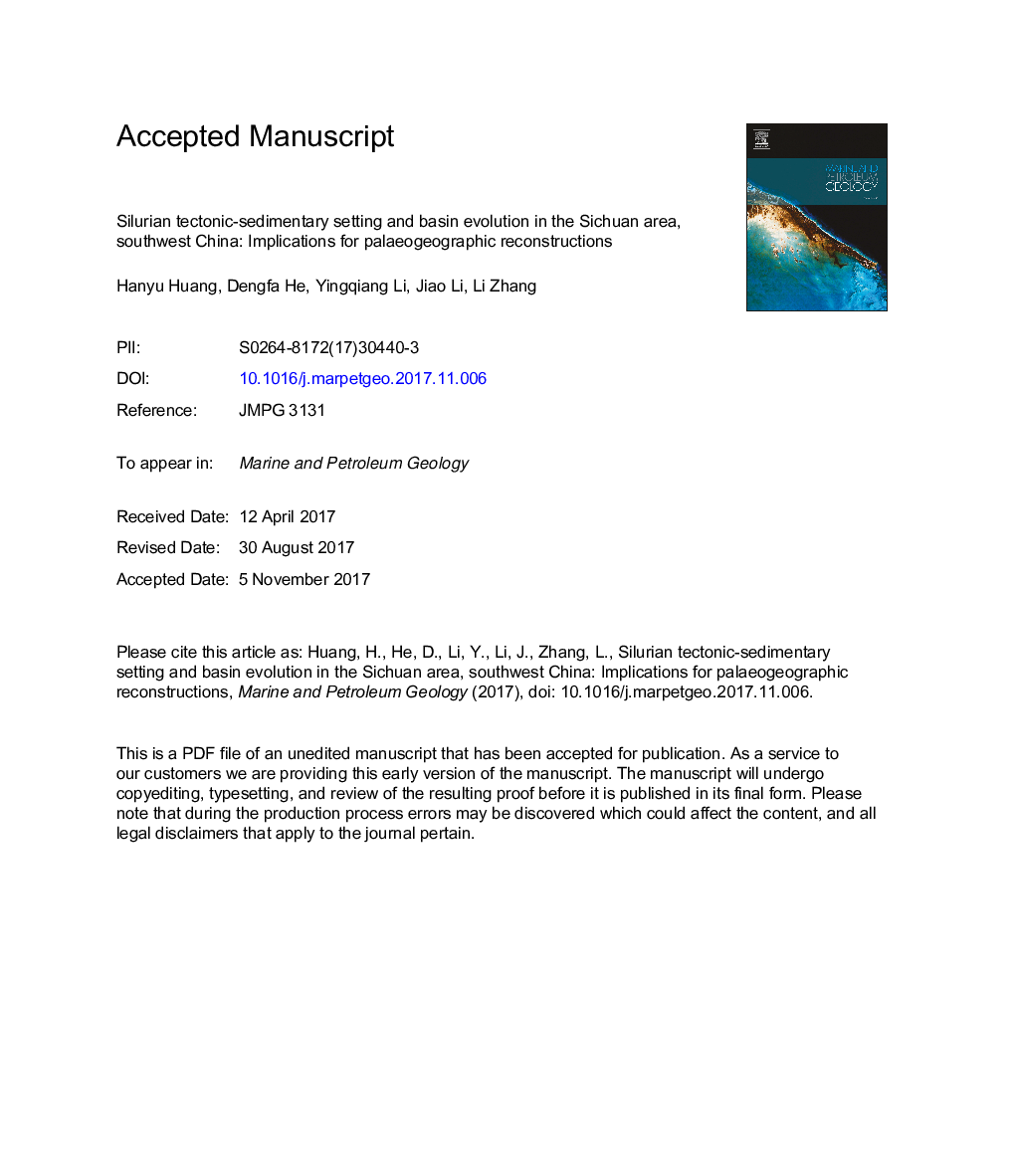| کد مقاله | کد نشریه | سال انتشار | مقاله انگلیسی | نسخه تمام متن |
|---|---|---|---|---|
| 8909133 | 1637133 | 2018 | 68 صفحه PDF | دانلود رایگان |
عنوان انگلیسی مقاله ISI
Silurian tectonic-sedimentary setting and basin evolution in the Sichuan area, southwest China: Implications for palaeogeographic reconstructions
دانلود مقاله + سفارش ترجمه
دانلود مقاله ISI انگلیسی
رایگان برای ایرانیان
کلمات کلیدی
موضوعات مرتبط
مهندسی و علوم پایه
علوم زمین و سیارات
زمین شناسی اقتصادی
پیش نمایش صفحه اول مقاله

چکیده انگلیسی
Silurian black shales are among the most significant hydrocarbon source rocks globally, and are widespread across the southern and eastern Sichuan Basin and adjacent areas. Their tremendous production potential has been demonstrated by the discovery of self-sourced shale gas reservoirs in the Jiaoshiba field, in the Fuling area of the Sichuan Basin. In this study, we reconstruct the tectonic and palaeogeographic framework of the Silurian Sichuan Basin, analyze the distribution of sedimentary facies, and subdivide the sedimentary succession into a number of stages. Understanding the formation and evolution of the Silurian Basin is necessary to predict its potential for future hydrocarbon exploration and development; and may also help to better understand global palaeoceanographic conditions during this interval. The Sichuan Basin in the Silurian period was located along the northwestern margin of the Yangtze Plate, which was itself located on the northern margin of Gondwana at a low (near equatorial) latitude. The basin was initially composed of an intracratonic depression surrounded by three structural uplifts, forming a semi-enclosed shallow sea, however the basin experienced intraplate tectonic deformation at an early stage, followed by continued flexural subsidence and intracratonic deformation. Preserved Silurian strata, comprising the Longmaxi, Shiniulan, and Hanjiadian formations, reflect several depositional stages, including: (1) slow deposition of the basal black shale of the Longmaxi Formation in a deep water environment, due to a transgressive lag following glacial melting in Gondwana, the resulting sea level rise, and intraplate tectonic activity; (2) rapid sedimentation during the later stage of Longmaxi deposition; (3) deposition of the Shiniulan Formation on a neritic carbonate platform in the southern of the basin; (4) deposition of the siliciclastic Hanjiadian Formation in a deltaic environment.
ناشر
Database: Elsevier - ScienceDirect (ساینس دایرکت)
Journal: Marine and Petroleum Geology - Volume 92, April 2018, Pages 403-423
Journal: Marine and Petroleum Geology - Volume 92, April 2018, Pages 403-423
نویسندگان
Hanyu Huang, Dengfa He, Yingqiang Li, Jiao Li, Li Zhang,